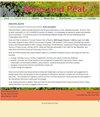The influence of anthropogenic land use on Finnish peatland area and carbon stores 1950–2015
IF 1.5
4区 环境科学与生态学
Q4 ENVIRONMENTAL SCIENCES
引用次数: 5
Abstract
This study presents a new data synthesis of Finnish peatland area and carbon (C) store in peat from 1950 to 2015. We present updated results from the most comprehensive compilation of Finnish peat soil properties with associated C accumulation rates from undrained mires and C sources from different forms of anthropogenic land use. Since 1950, different forms of land use of Finnish peatlands have reduced the total peat C store by 3–10 %, approximately 172–510 Tg. The most significant C losses have occurred from forestrydrained peatlands, but significant losses have also occurred from agricultural peat soils, peat extraction, and other forms of peatland exploitation such as building water reservoirs. However, the C accumulation of undrained mires and especially the increased biomass production of drained peatlands have partly compensated for the anthropogenic C losses. The total C store of peatland vegetation biomass (trees, seedlings, ground vegetation, detritus and below-ground roots) was estimated to have increased by 92 Tg due to intensive peatland drainage. The present total C store of Finnish peatland ecosystems was estimated at 5618 Tg, which includes 5079 Tg as peat. The total C store estimate is approximately 1–7 % lower compared to the 1950s. Today, the undrained mires still represent a significant national C sink, with the rate of C sequestration estimated at 0.82 Tg yr-1. However, across all land uses the present peat soil is a C source by 3.7–10.0 Tg yr-1. Significant anthropogenic C losses from peat soil underline the urgent need for sustainable C management of all peatlands, including the preservation of the C store in existing natural mires, stopping land clearing on undisturbed organic soils, and improving the peatland hydrology by restoration to create long-term C sinks especially within the large unproductive drainage area and northern aapa mire area.1950-2015年芬兰人为土地利用对泥炭地面积和碳储量的影响
本研究提出了1950 - 2015年芬兰泥炭地面积和泥炭碳(C)储量的新数据综合。我们提出了芬兰泥炭土特性的最新结果,这些特性与不排水矿井的碳积累率和不同形式的人为土地利用的碳源有关。自1950年以来,芬兰泥炭地的不同土地利用形式使泥炭碳总储量减少了3 - 10%,约为172-510 Tg。最显著的碳损失发生在森林排水的泥炭地,但也发生在农业泥炭土、泥炭开采和其他形式的泥炭地开采(如建造水库)中。然而,不排水矿井的碳积累,特别是排水泥炭地生物量产量的增加,部分补偿了人为的碳损失。泥炭地植被生物量(树木、幼苗、地面植被、碎屑和地下根系)的总碳储量估计因泥炭地密集排水而增加了92 Tg。芬兰泥炭地生态系统目前的总碳储量估计为5618 Tg,其中泥炭为5079 Tg。与20世纪50年代相比,总C存储估计大约降低了1 - 7%。今天,不排水的矿井仍然代表着一个重要的国家碳汇,其碳固存率估计为每年0.82 Tg。然而,在所有土地利用中,目前泥炭土是每年3.7-10.0 Tg的碳源。泥炭土壤中大量的人为碳损失强调了对所有泥炭地进行可持续碳管理的迫切需要,包括保存现有天然泥炭中的碳储存,停止在未受干扰的有机土壤上进行土地清理,以及通过恢复来创造长期碳汇来改善泥炭地水文,特别是在大型非生产性排水区和北部沼泽区。
本文章由计算机程序翻译,如有差异,请以英文原文为准。
求助全文
约1分钟内获得全文
求助全文
来源期刊

Mires and Peat
ENVIRONMENTAL SCIENCES-
CiteScore
2.30
自引率
16.70%
发文量
0
审稿时长
33 weeks
期刊介绍:
Mires and Peat is a peer-reviewed internet journal focusing specifically on mires, peatlands and peat. As a truly “free-to-users” publication (i.e. NO CHARGES to authors OR readers), it is immediately accessible to readers and potential authors worldwide. It is published jointly by the International Peatland Society (IPS) and the International Mire Conservation Group (IMCG).
Mires and Peat is indexed by Thomson Reuters Web of Science (2017 Impact Factors: 1.326 [two-year] and 1.638 [five-year]), Elsevier Scopus, EBSCO Environment Complete, CABI Abstracts, CSA Proquest (including their Aquatic Science and Fisheries Abstracts ASFA, Ecology, Entomology, Animal Behavior, Aqualine and Pollution databases) and Directory of Open Access Journals (DOAJ). Mires and Peat also participates in the CABI Full Text Repository, and subscribes to the Portico E-journal Preservation Service (LTPA).
Mires and Peat publishes high-quality research papers on all aspects of peatland science, technology and wise use, including:
ecology, hydrology, survey, inventory, classification, functions and values of mires and peatlands;
scientific, economic and human aspects of the management of peatlands for agriculture, forestry, nature conservation, environmental protection, peat extraction, industrial development and other purposes;
biological, physical and chemical characteristics of peat; and
climate change and peatlands.
Short communications and review articles on these and related topics will also be considered; and suggestions for special issues of the Journal based on the proceedings of conferences, seminars, symposia and workshops will be welcomed. The submission of material by authors and from countries whose work would otherwise be inaccessible to the international community is particularly encouraged.
 求助内容:
求助内容: 应助结果提醒方式:
应助结果提醒方式:


